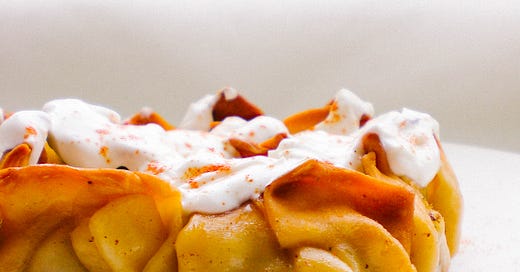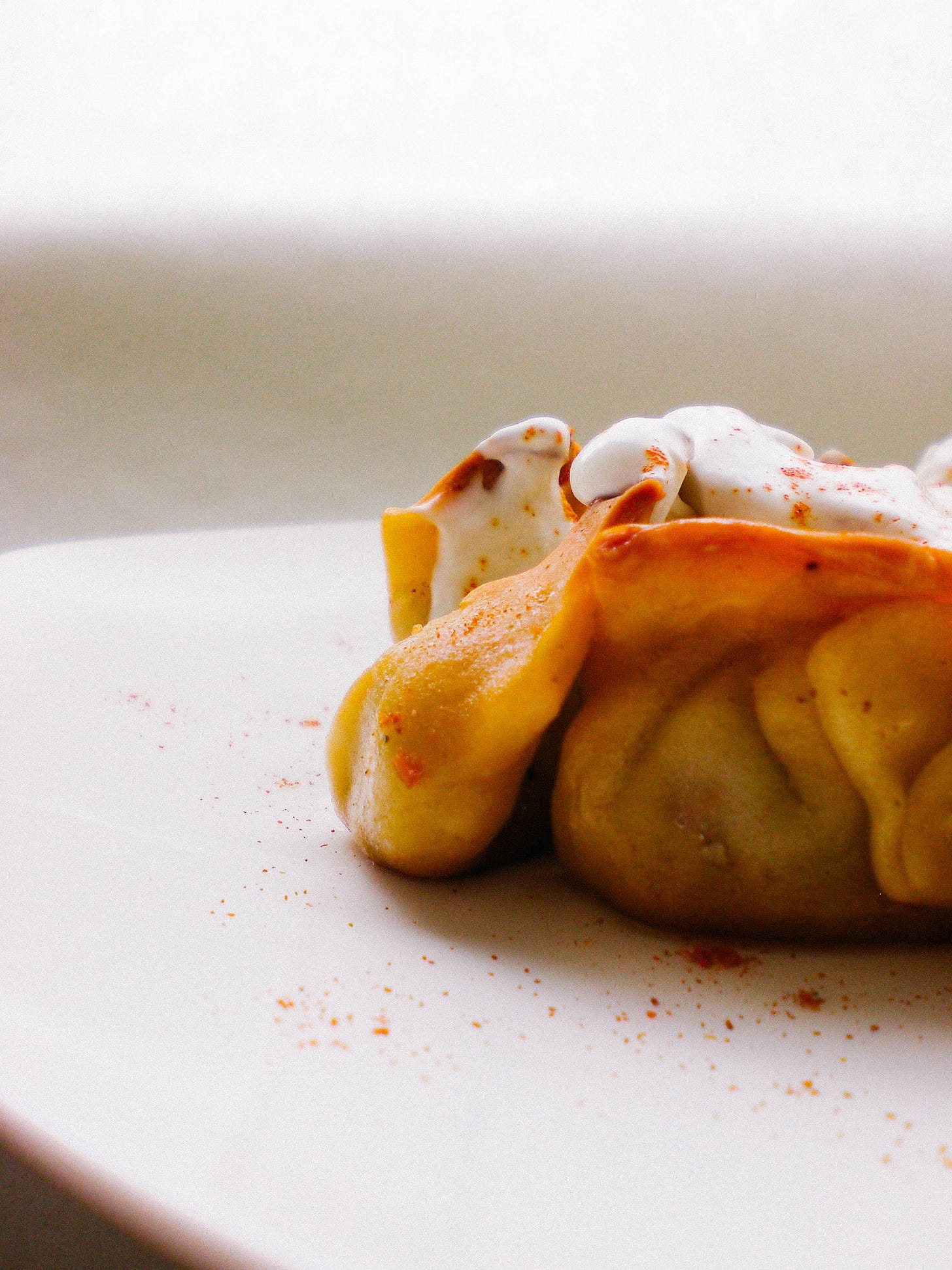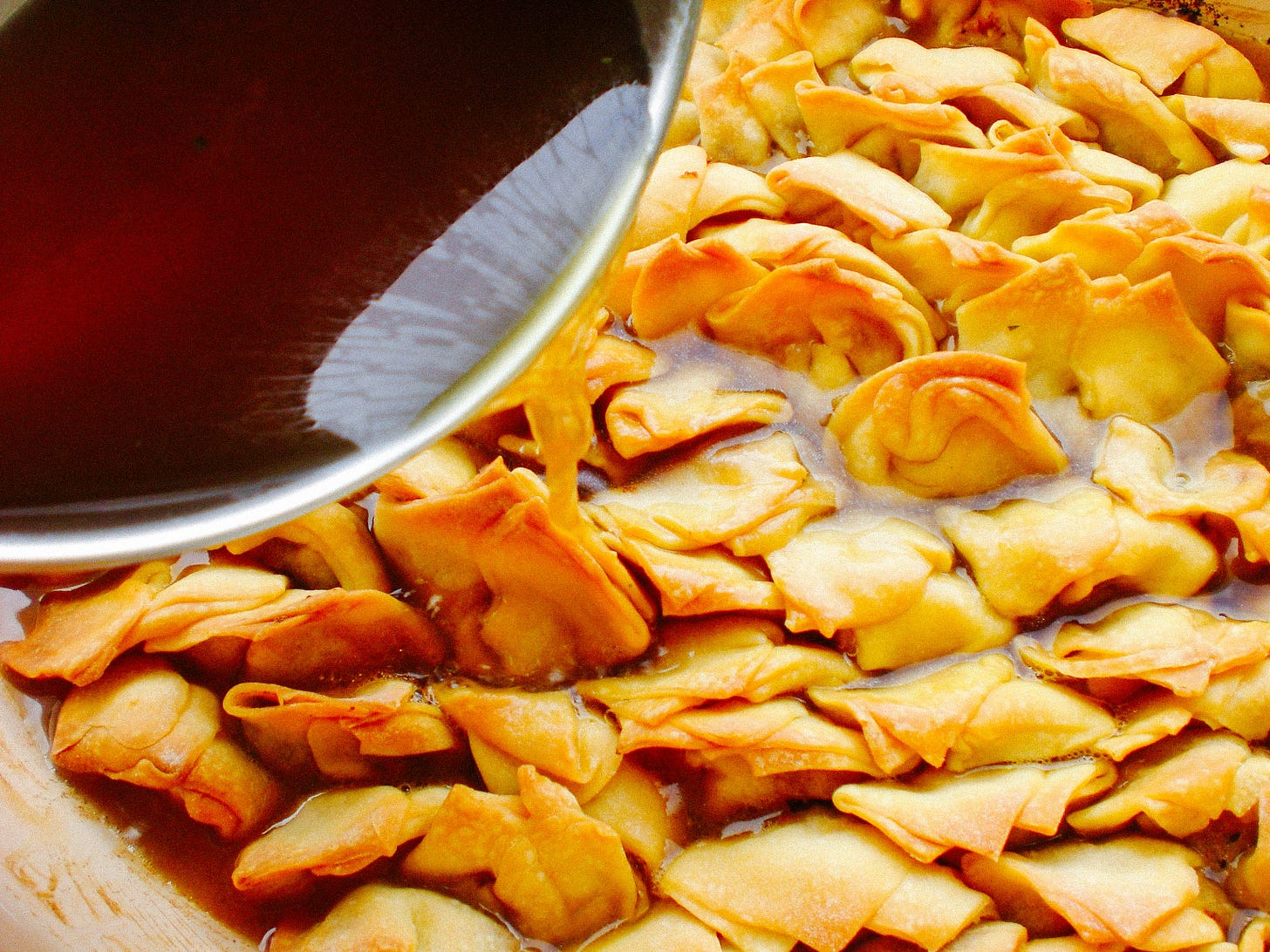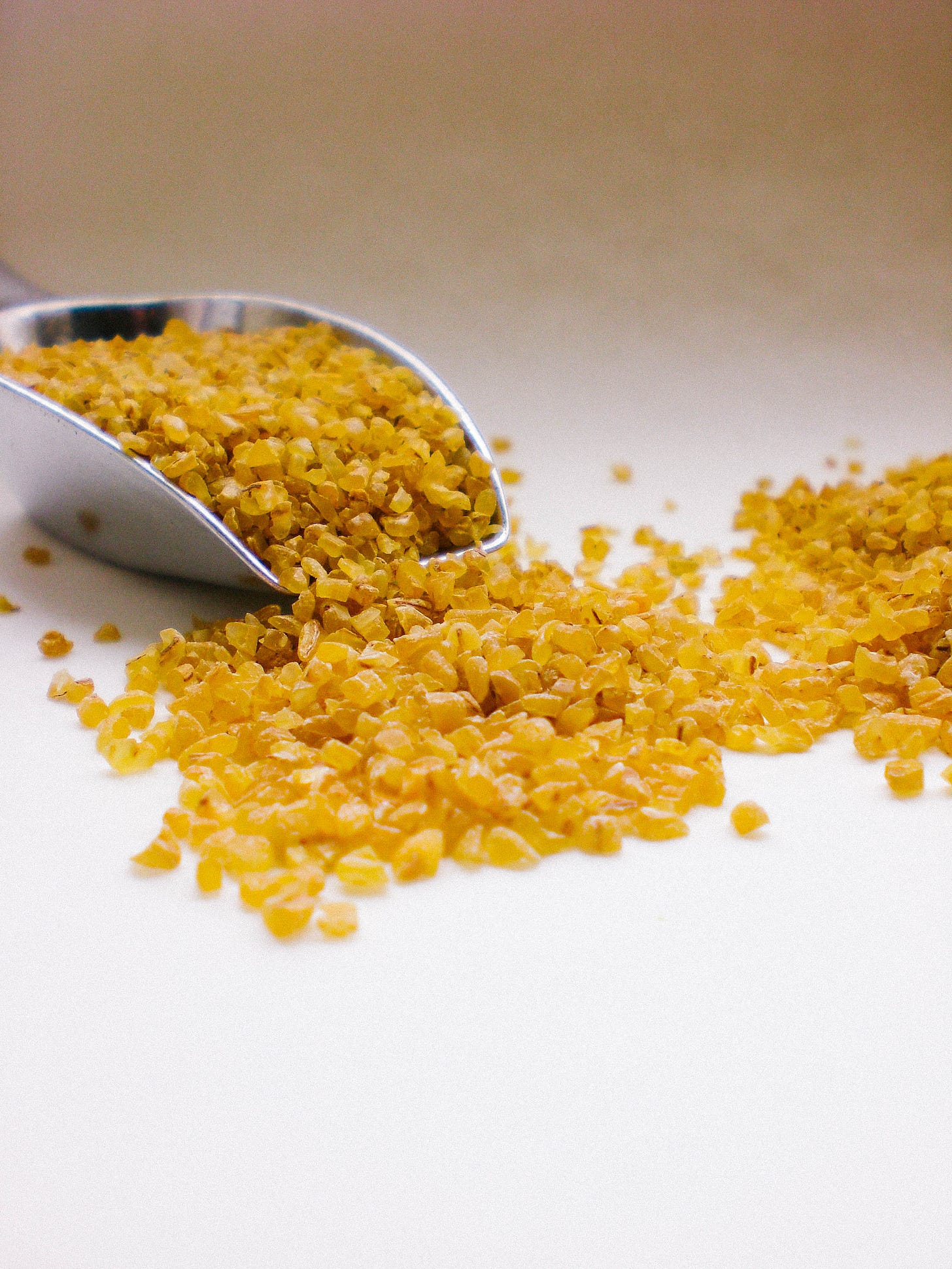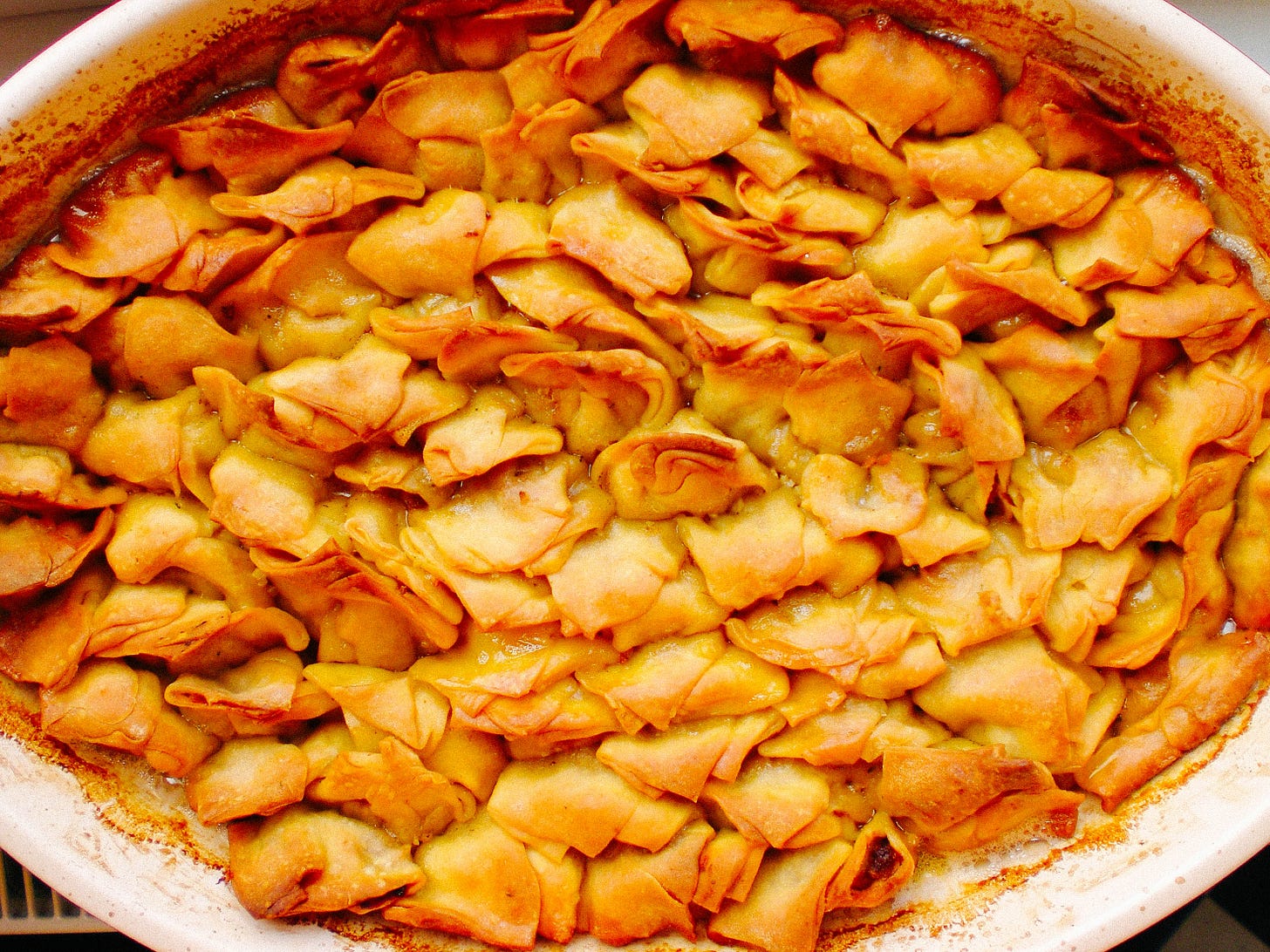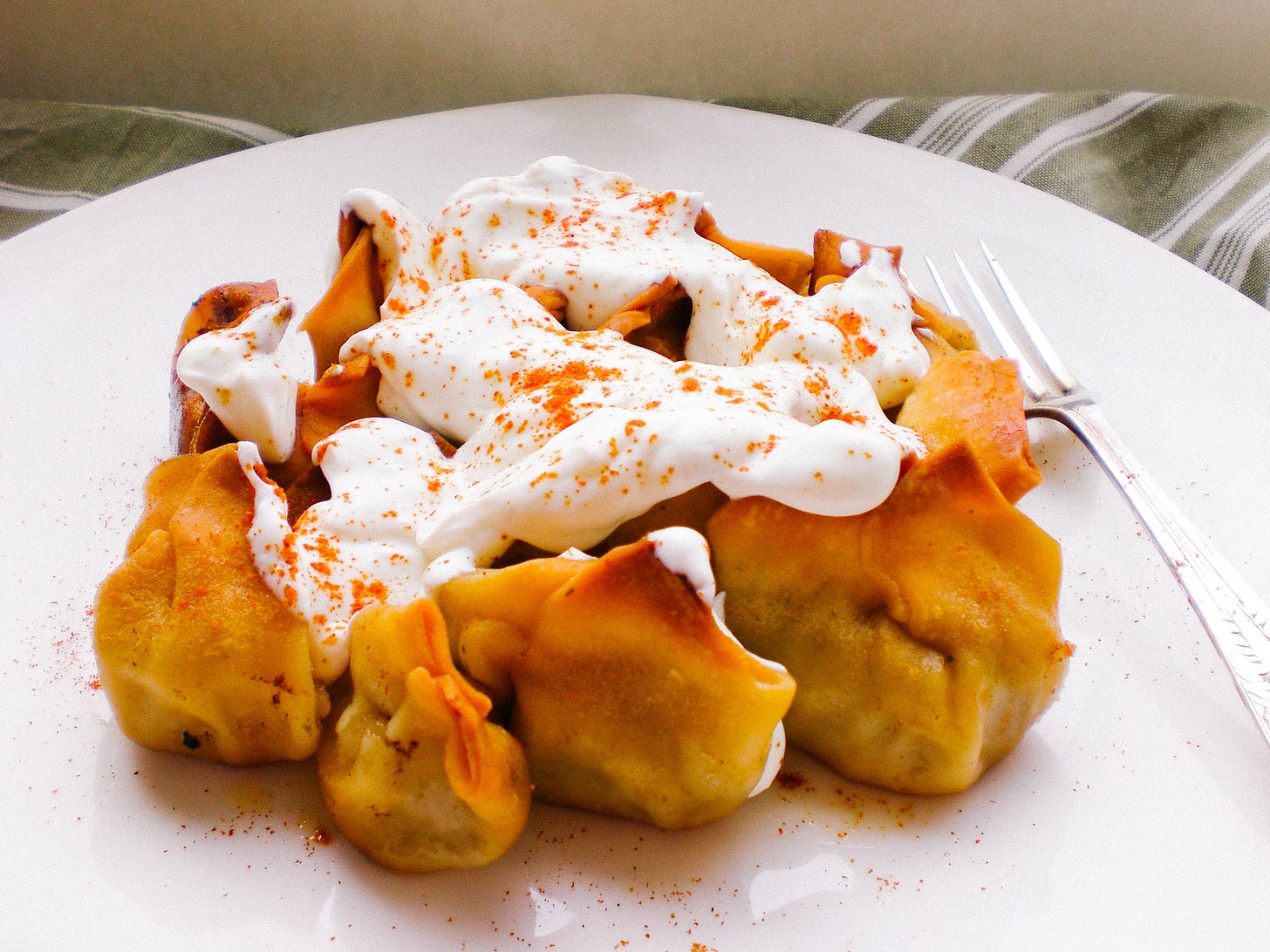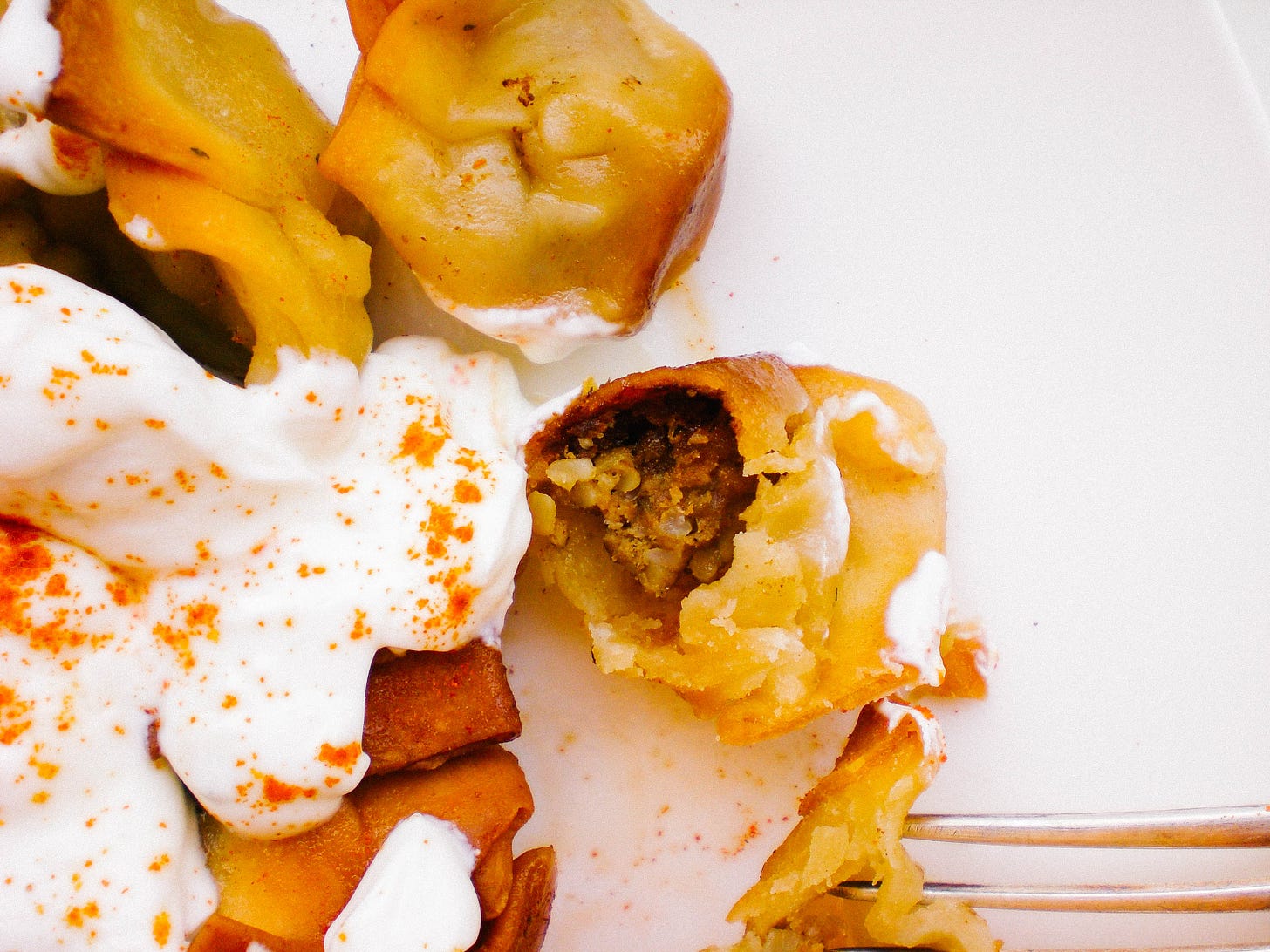Politiko Manti - Spiced baked minced meat dumplings with yoghurt-garlic sauce in the Constantinople Greek manner
And the food I grew up with, my roots, my influences, my cooking inspiration always and forever
Published originally on my blog on 4 July 2010
My mom says that I got the knack for cooking from my grandfather and that always brings a huge smile to my face. I loved my grandfather tremendously. He was a very important figure in my life and a very talented person. He was a painter, a sculptor and a home cook and whenever he was cooking or working on his art, he was always whistling. Sometimes I can still hear his whistle if I close my eyes and concentrate hard enough...
My grandfather loved to cook. He would stay in the kitchen for hours, preparing marmalades and jams, pies and breads, all kinds of savory dishes and desserts. He liked to experiment with different ingredients and he used to watch French cooking shows on satellite tv, trying to pick up new ideas for dishes and constantly coming up with new recipes. What he also did, was to make sure he took the credit for whatever he had cooked, letting everyone know that he was the one responsible for the delicious food on the table and not my grandmother. He was funny that way.
He had a summer house by the sea where my brother and I spent every summer with him and my grandmother. He used to dive and catch mussels, clams and octopuses for us all the time. There is a specific image of him etched in my mind. Him, sitting at the veranda with a big plate of raw, freshly caught clams on his lap, prying them open one by one with the help of a huge knife, squeezing a couple of drops of lemon over them and then quickly sucking them down with a loud, slurping sound.
To him, eating was a ritual. He sat at the head of the table, enjoyed every single bite and he demanded that the bread basket and the bottle of ouzo were always situated next to him. He couldn't live without his crusty bread and his shot of ouzo. The practice of sitting at the dinner table and savoring the meal for more than an hour or sometimes hours if having company, nibbling on various mezedes (plural for mezes) and sipping ouzo, is characteristic of all the Greeks from Constantinople (Istanbul). My grandfather was born and raised in Constantinople or 'Poli' as we Greeks call it for short. He lived there until his mid-30s and then moved to Piraeus, Greece with my grandmother- who was originally a Greek from Poli and the city of Smyrna- and their two children; my mom and my uncle.
What they brought with them, as every other Greek from Constantinople did, was a food culture very much distinguished from the traditional Greek one. A food culture and a type of cooking influenced and shaped by the intermingling of the traditional Greek culinary customs and those of Anatolia (Asia Minor). The extensive use of spices, the utter importance of food in everyday life, the celebratory way of viewing food in general, are elements that are deeply rooted in my family's culinary consciousness. The type of cooking of the Greeks from Constantinople is called 'Politiki Cuisine'.
You can catch a glimpse of what it means to be a Greek from Constantinople and the importance of food, in the wonderful Greek movie 'A touch of spice' ('Politiki Kouzina').
I was brought up with that kind of cooking. My earliest memories of food include lots of spices and heavy sauces, an array of dishes, the names of which I couldn't even pronounce because of their Turkish origin, and a reverence toward the ritual of eating, especially when we had guests. The abundance of food served at a gathering was, and still is at such occasions, monumental. If just the main meal and a salad are on the table, it is considered shameful by my grandmother and my mom. They need to have at least five or six dishes of mezedes around to call it a proper meal.
Pastourmas (seasoned air-cured beef), soutzouki (a dry and very spicy sausage), dolmadakia (vine leaves stuffed with rice and mint), soutzoukakia (beef patties in a tomato sauce), piazi beans (white bean salad with onions, parsley, olive oil and vinegar), Politiki salad (grated carrot and white cabbage tossed with vinegar and olive oil), eggplant imam baildi (stuffed eggplants with onions and tomato), tas kebab (beef or lamb in a spicy red sauce), hunkiar beyiendi (an eggplant purée with diced meat) are a sample of Politiki Cuisine along with the famous desserts like baklava, ekmek kataifi and a delicious and refreshing drink called airani (yoghurt mixed with water and salt).
I could go on and on with a never-ending list of dishes. I want to dedicate a post to each and every one of them and I will at some point, but as an introduction to Politiki Cuisine I chose one of my favorite dishes in the world; Manti.
Manti is the name of the dish but manti is also the name of each small pouch of filled pasta. The plural is also manti.
The word Manti derives from the word Mantu, meaning dumplings and they are believed to be of Mongolian/Turkish origin.
Manti is actually a dumpling with a pasta-type dough, filled with ground meat, usually lamb or beef, mixed with spices and it is either boiled, steamed or baked in the oven. It is served with a yoghurt sauce and red pepper and there are versions of it that call for an additional tomato sauce. The version I am sharing with you is not the original Turkish one but the one my family has always made. It is one way of making Politiko manti , meaning manti made in the Constaninople Greek manner and I am so excited to be sharing this recipe with all of you.
Making your own dough for the manti is crucial. There are those who use wonton or other ready-made wraps but I prefer the old fashioned way of making my own. It is a fairly easy process of combining flour with water, though you may find that in most Turkish versions of this recipe they tend to add eggs. The Greek version is a bit lighter.
For the filling, I prefer using a mixture of ground beef and pork, bulgur wheat and spices. The pork doubtlessly adds some extra flavor to the manti and the bulgur, which is widely used in Politiki Cuisine, gives a nutty flavor to the overall dish. The filled manti are baked in the oven and once they are almost cooked, they are drenched in beef stock and put again in the oven to soak up all the juices. The dish is served with a sauce of Greek yoghurt and mashed garlic and it is topped with ground red hot pepper and sumac.
It is an immensely tasty and aromatic dish and its authenticity and rustic quality makes it unique. The cooked dough is crunchy and browned on top and deliciously moist at the bottom, overflowing with all the scrumptious juices from the meat and melted butter.
The nutty flavor of the bulgur is a perfect match for the pungent spices.
It has a superb spicy flavor and I have to admit, it is rather heavy. The yoghurt-garlic sauce on top, as well as the red pepper and sumac, add a complexity to the overall dish, giving it a hint of heat, sharpness and acidity, while the yoghurt succeeds in making it a bit lighter.
Manti is a main dish that will surely fill you up and give you an incomparable tasting experience. It is ideally served with a simple salad of shredded carrot and cabbage dressed with olive oil and red wine vinegar. A carafe of ouzo or a tall glass of beer would be a fitting accompaniment to the dish.
Whenever I make these kind of dishes I feel a sense of accomplishment and a connection to my family's roots. I'm sure that if my grandfather was alive he would be very proud of me.
Do you ever feel the same way? Do you have a specific kind of cuisine that links you to your ancestors? Are there dishes that remind you of loved ones?
Politiko Manti - Spiced baked minced meat dumplings with yoghurt-garlic sauce in the Constantinople Greek manner
This dish is truly exceptional but it does take a lot of time to prepare.
The recipe calls for beef stock. You can make your own, you can use canned beef stock or cubes.
In case you don't like pork, you can use just ground beef or a mix of ground beef and veal or lamb. Greeks always choose veal over beef, we don’t particularly enjoy the mature flavor of beef, but you can use either.
The yoghurt-garlic sauce contains four garlic cloves which might sound a lot, but that is the point. This is the way the dish is supposed to be. You can of course use less garlic or even more, depending on how much you enjoy it.
If for some reason you can't source sumac, you can substitute with a little freshly grated lemon zest mixed with a pinch of salt.


